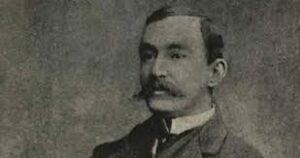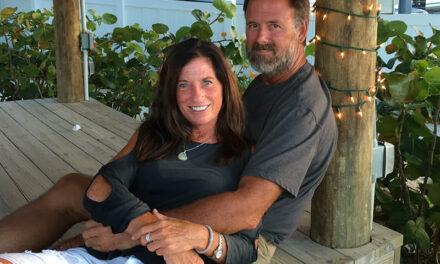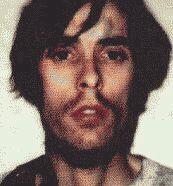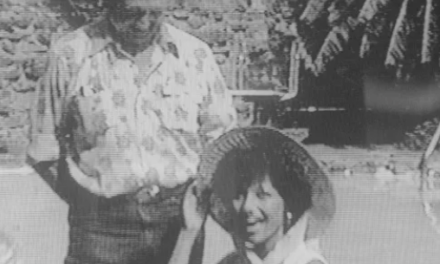 Scotsman John Jameson was the founder of Jameson Irish Whiskey. In 1786 he managed the distillery that actually belonged to his wife’s family. The distillery resided in Dublin’s Bow Street.
Scotsman John Jameson was the founder of Jameson Irish Whiskey. In 1786 he managed the distillery that actually belonged to his wife’s family. The distillery resided in Dublin’s Bow Street.
By 1805 John purchased it from his wife’s family and just a mere five years later his son, named John as well officially founded the company named, John Jameson and Son Irish Whiskey Company.
Jameson’s whiskey went on to become the world’s number-one whiskey. Increasing production forced them to expand the distillery as they were producing one million gallons of whiskey every year.
By the time the world headed into the 19th century, the distillery would span over five acres and included underground storage for the maturity process to take place. Some often called the distillery A city within a city.
John Jameson died on December 3rd, 1823 and at this time Jameson Whiskey was established as the country’s leading whiskey maker. The distillery continued to thrive as did his family. A grandson James Sligo Jameson was born in 1856 and would obviously become an heir of the Jameson legacy. James was born to John’s fourth son Andrew.
James Sligo Jameson would have an uneventful childhood. Nothing extravagant to report. He attended college and would later be prepped for the army. Though in 1877 he chose to devote himself to a life of travels. During his travels James became the first to discover a type of honey-buzzard and was a bird enthusiast. By the end of 1878, he visited South Africa in search of big game to hunt.
Though during 1884 to 1885 he went home.. While home he married a woman named Ethel, the daughter of Sir Henry Marion Durand
By 1886 he joined The Emin Pasha Relief Expedition as a naturalist. This expedition would last from 1886 to 1889.
This expedition was led by the Welsh-American explorer Henry Morton Stanley. The controversial British-led mission was to rescue Ermin Pasha, the German born doctor and Muslim convert. The doctor had emigrated to the Middle East and had become governor of Egypt Equatorial province. Communications had been cut off. James Sligo Jameson was the only Irish officer on this mission up the Congo River. He was the first to arrive in Africa in 1887.
The group would also explore new colonial territories in the Congo for Belgium
During 1888 the mission led the group to the Yambuya Camp in Africa. After the mission the expeditions interpreter, Assad Farran, had written an affidavit to the leader of the mission Henry Morton Stanley describing cannibalistic rituals involving Mr. Jameson.
Assad alleged that while Mr. Jameson was returning from Kasongo to Yambuya with Chief Tippoo Tib, the Arab Chief of the Manyema, the group of 400 men would need to stop off for a two day period to obtain food and rest. In this area Jameson encountered Chief Mohamad Ben Camese and after various discussions on different matters, Mr. Jameson stated he was very anxious to see a man killed and eaten.
The conversation was discussed through Tippoo Tib’s interpreter, Selim Masondi.
It is said that Jameson stated.
 “In England we hear about cannibals who eat people, but being myself in the place I should like to see it done.”
“In England we hear about cannibals who eat people, but being myself in the place I should like to see it done.”
That was interpreted to the chiefs and after they discussed it they told Mr. Jameson that if he wanted to see this he would have to buy a slave that he would present to the cannibals and they would eat the slave in front of him.
Mr. Jameson asked what the price would be and he was told six pieces of clothes which were handkerchiefs. Once he handed payment off a man brought out a young girl of about ten years old. The girl was led by the orders of the chiefs to the huts to be eaten.
The native huts were where the cannibals dwelled. The cannibals were told the girl was a gift from the white man and he wants to see you eat her. The cannibals then tied the girl to a tree as others sharpened their knives.
Assad Farran, the mission’s interpreter, continued on in his letter in graphic detail. He stated a man stabbed the girl with a knife twice in the belly. He stated the young girl did not scream though she was aware of what was happening to her. After dying from her stab wounds, the cannibals began cutting her in pieces. A leg, an arm, her breasts, one cut her head and another took the inner pieces of her stomach area.
Once the meat was divided some took it to the river to wash it, though others went straight to their huts.
It was said… During this incident, that Mr. Jameson was drawing rough sketches of what he had seen. Assad concluded that Mr. Jameson had created six small sketches and painted them with water colors.
31 year old James Jameson died in 1888 of a type of Typhoid fever in the town of Bangala which is not the Democratic Republic of the Congo . Though after his death, his group’s interpreter chose to share this story. The Jameson Cannibalism Affair became a bona fide scandal that ripped through newspapers. Particularly the publication The Times of London.
Assad Farran told the press he saw for himself the person being killed and cooked for food for the Manyemas, he then gave a description of an orgie that Mr. Jameson was very interested in and did not protest while he watched it occur.
While grieving James Jameson, his wife, defended him in every way she could to the press. Jameson’s final telegraph to his wife read :
“The reports about me, emanating from Assad Farran, a distinguished interpreter, are false. If made public, stop them.”
At one point Jameson’s journal was found and it did corroborate the incident, but in a very different way. Jameson wrote that he was horrified by the murder and mutilation of the girl and stated he did not sketch the scene until later after the incident.
He wrote that he felt the entire proposal was a joke and they were simply trying to take something from him. From his journal entry, here is what he wrote:
“Give me a bit of cloth and see.” I only thought this another of their plans for getting something out of me, and, having some cloth of my own, as he had been kind to me, sent my boy for a small piece of six handkerchiefs, which I gave to him. Then followed the most horrible scene I ever witnessed in my life…
The whole thing happened so quickly that, had I wished, I could not have sketched it, and I had nothing with me to sketch with, they all being in my house. The small sketches I made were done in the evening afterwards in my own house… How the girl was obtained I do not yet know…
By September of 1888, Assad Farran retracted his accusations. He said, “ I Assad Farran, lately interpreter with the Emin Relief Expedition, declare most solemnly that the story of Mr. Jameson buying the girl has been altogether misunderstood by the missionary at Ltete. The story is entirely untrue…..”
Could James Sligo Jameson really been living out a cannibalistic fantasy? Sketching it to keep it fresh in his mind? Or was he just an unsuspecting witness of a cannibalistic ritual. We may never really know… And just have to leave this to the realms of the unexplained…










